Member organizations
AustriaÖsterreichische Gesellschaft für Festungsforschung
|
The Austrian Society for Fortification Research (Österreichische Gesellschaft für Festungsforschung – OeGF) was established to create a coherent scientific documentation about the Habsburgs’ monarchy fortification system between 1815 and 1918. Covering the territory of 12 successor nations, this variety is also reflected by its members, who are specialising in certain regions and construction periods. Another aim of the society is the usage of our research results for conservation/utilisation projects involving Austrian fortifications. The projects are supported on a professional level with the specialised know how of the OeGF. Aside of this, our main instrument of communication is the OeGF website, where research results are presented in a very condensed way. Additionally our members are also involved in giving lectures or publishing books in order to increase the public awareness about Austro-Hungarian fortifications.
Representative: Dr. Reinfrid Vergeiner, Vizepräsident |
Belgium
Simon Stevin Vlaams Vestingbouwkundig Centrum
|
The Simon Stevin Vlaams Vestingbouwkundig Centrum is dedicated to the conservation, preservation and restoration of fortified sites (including landscaping and signage) and also the redesignation of historical fortifications like forts, ramparts, bunker lines and other types of fortification. Specialised staff members deliver advice and are available for consultation in the area of the preservation, protection and restoration of our fortified buildings heritage. Often we organise visits to forts and other fortifications at home and abroad. We publish the periodical "Vesting" and administer an extensive documentation centre. The Simon Stevin V.V.C. is firmly anchored via a network of local correspondents within the local authorities and the fortified heritage authorities. The Werkgroep Moderne Fortificatie (WMF) is a section of the Simon Stevin V.V.C. which is specialised in the latest generation of fortifications like the Atlanticwall, the Maginot Line, the Westwall, the KW Line, the bunker lines from World War I a.o.
Representative: Mr. Luc Olyslager |
CroatiaNacionalna Udruga za Fortifikacije (NUF)
|
The National Association for Fortifications (Nacionalna udruga za fortifikacije, abbreviated NUF), is the umbrella organization in Croatia founded for studying, dissemination and public information on practical architectural projects on the restoration of fortifications which are recognized as a valuable architectural heritage in the Republic of Croatia The National Association for Fortification was established in Zagreb, on the initiative of the International Fortress Council (IFC), and entered in the Register of Croatian Associations on 14 April 1999, (under the registration number 00001377).
Representative: Mr. Stepan Loncaric |
Czech RepublicCzech Association for Military History (CAMH)www.kvh-praha.cz 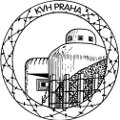 |
The Klub Vojenství a Historie Praha is an all-volunteer organization, founded in 1980. It explores the theoretical as well as the practical (construction-)aspects of fortifications from the 16th – 20th century, and especially the building in the period 1935-1938 of Czech-Slovak infantry bunkers. Members are volunteers interested in these matters. To name just a few of the volunteers, sharing their common interest in this: historians, architect, engineers, museum staff and educators.
Representative: Mr. Robert Stepnicka |
FranceAssociation Vauban (AV) http://www.association-vauban.fr
|
Created in 1981 at the initiative of three personalities, Serge Antoine (†), Senior Member of the Court of Auditors st, Michel Parent (†), Inspector General of Historic Monuments (ret.) and former President of World Heritage and Alain Monferrand current president, director of tourism Observation ODIT France, Association Vauban now includes all those who wish to promote knowledge of Vauban's work and that of the fortified heritage in modern times to the contemporary works. Amateurs and professionals from diverse backgrounds, military engineers and architects, academics, historians, curators and administrators, tourism officials, leaders and representatives of local governments and various associations and backup are united by their common interest in the architectural heritage particular, of considerable historical importance, particularly well integrated into the landscape and aesthetically granted to the spirit of our time.
Representative: Mr Marc Gayda |
Germany
Deutsche Gesellschaft für Festungsforschung (DGF)
ItalyRete delle Fortificazioni
|
The Deutsche Gesellschaft für Festungsforschung (DGF) Activities and Objectives Fortifications, fortresses and forts are an important part of our cultural heritage. In recent years, the interest in historic fortifications has increased, and they have become generally accepted as valuable evidence of times past. This trend is also furthered by modern development concepts. The scientific research and transfer of knowledge not only include architectural history, but also economic as well as social history. Over the last decades, the DGF has taken an active part in this process by:
Publication Series Festungsjournal (Journal of Fortification and Military Architecture) This journal is published several times a year and contains information on recent developments and announcements relating to the association as well as essays/scientific articles, travel accounts, reports on study trips and reviews. Festungsforschung (Fortification Studies) In this book series, the relevant results of the latest scientific research are published in the form of essay collections. Deutsche Festungen (German Fortifications) This book series introduces the most important fortifications to be visited in each Federal State of Germany.
Representative: Mr. Andreas Kupka M.A.
The Rete delle Fortificazioni The Rete delle Fortificazioni was established on 12th March, 2021 at Forte di Bard (Aosta, Italy) and is formed by a group of 13 organizations, involved in the research and valorisation italian fortifications. The institutions involved are: Association Forte di Bard, Municipality of Alessandria, Municipality of Casale Monferrato, Municipality of Vinadio,Centro Studi e ricerche storiche Architettura militare del Piemonte, Piedmont Section of Istituto Italiano dei Castelli, Association Studi di Storia e Architettura Militare, Association Casalese Arte e Storia, Association Progetto San Carlo Forte di Fenestrelle, Pietro Micca Museum, Association Amici del Museo Pietro Micca, Artea Foundation and Istituto internazionale di Studi Liguri. The Rete delle Fortificazioni contribute to creating a network of Italian fortifications by grouping and strengthening the existing realities in order to: support more effectively the tasks and activities of study, research, conservation, enhancement and promotion; develop learning economies by promoting the exchange of knowledge and skills between the different Italian realities and between these and the European ones; be more easily able to create value and to involve territorial stakeholders.
Representative: Ornella Badery, President of Bard Fort Association |
Luxembourg
Frënn vun der Festungsgeschicht Lëtzebuerg a.s.b.l. (FFGL)
Malta (candidate member; see below)
PortugalAssociação Portuguesa dos Amigos dos Castelos- APAC
|
Luxembourg was once called Gibraltar of the North and the enhancement of military heritage began right after the dismantling of large parts of the fortress which was decided at the London conference in 1867. The society “Frënn vun der Festungsgeschicht Lëtzebuerg a.s.b.l.” (FFGL) was founded in 1992 as a result of public involvement in saving the „Fort Thüngen“ from its planned integration in a new museum for modern art, as this would have meant a profound transformation of its historical value. The FFGL has also been successful in claiming the creation of a documentation centre focused on the topic of the fortifications in the “Grande Région” and more specifically the fortress of Luxembourg city. The FFGL is active in the protection and conservation of the fortress of Luxembourg which has been a UNESCO World Heritage site since 1994. Among other activities, the society organises guided tours to those parts of the casemates that normally remain closed to the public. It also publishes a newsletter, brochures and books
Representative: Mr. Patrick Schaul, member of the board of FFGL
The APAC, a non-profit association, founded in 1983, is a national association for the defense of heritage, and its objectives are the safeguarding and dissemination of natural and built heritage, with a special focus on fortified and military heritage, raising awareness and involving people and communities in their preservation. To fulfill its mission, the association promotes or collaborates in the organization of numerous cultural and scientific activities aimed at different audiences.
Representative: Mrs. Margarida Valla |
Netherlands, TheStichting Menno van Coehoorn (MvC)www.coehoorn.nl  |
The Stichting Menno van Coehoorn is a national all-volunteer organization that promotes, since its founding in 1932, the conservation and protection of historical defence works, like walls, fortresses, casemates, defensive positions and defence lines. The Netherlands are in the lucky possession of a number of intact fortified cities, for example Naarden and Willemstad. Thanks to the Stichting Menno van Coehoorn these cities are kept in their original form. Aside from these spectacular monuments there are, all over the country, many other old military objects. They often are of (cultural-) historical and/or architectural value, as well as examples of town-building and landscaping. On many of these obsolete military installations – because of a long period of isolation – beautiful flora and fauna have developed. Fortifications of Dutch origin can also be found in many foreign countries. The Stichting Menno van Coehoorn also promotes the conservation and protection of those.
Representative: Mr. Evert Westerhuis |
SwitzerlandAssociation Saint-Maurice d'Etudes Militaires (ASMEM)
|
The Association Saint-Mauride d’Etdues Militaires (ASMEM) was formed in 1974. It aims at gathering and opening to the public of all kind of documents on fortifications, organization and of combat in fortified sectors. To achieve the goals of our association, the ASMEM offers its members:
On the other hand, the ASMEM works closely with other associations in connection with the organization of festive events (St. Barbara in Champex, Days company in Fort Cindey, etc.). She handed, a few years ago, significant MODELS at Museum in the Castle of Saint-Maurice. These models, made by some of its members, are impressive in size and quality details. Finally, our association is a member of INTERNATIONAL Fortess Council which our former president, Luc Fellay, former head of Swiss Land Forces, in the chair for 3 years and was renewed in his office at the last meeting of this association.
Representative: Mr. Pascal Bruchez |
United KingdomFortress Study Group (FSG)www.fsgfort.com  |
The Fortress Study Group is an international society concerned with the study of all aspects of military architecture and fortifications and their armaments, especially works constructed to mount and resist artillery. The Group was formed in 1975 to provide an opportunity for those interested in fortifications and military architecture to meet, get to know one another and publish their work. Since then the membership has grown to around 600, representing over 30 countries worldwide. They include professional architects and historians, retired or serving members of the armed forces as well as professional institutions and those with a casual but enthusiastic interest. The FSG actively encourages the research, study and recording of fortifications of all periods and publishes FORT, an annual journal, which contains articles about the theory, development, practice, conservation, adaptation and reuse of fortifications and military architecture. The group also publishes Casemate, a well-established magazine which appears three times a year. Every year the FSG organises a Conference Weekend in the UK, which includes trips to local sites of interest to the group and lectures on aspects of fortification. There is an annual Members Day with presentations from members, and a Study Day visit to a site of special interest. Each year a Study Tour examines the fortifications of other countries. Countries visited include Belgium, Bermuda, the Czech Republic, France, Gibraltar, Italy, Malta, the Netherlands, Poland, Portugal, Rhodes, and Slovenia. Members have been actively involved the restoration of fortifications and were keenly involved with the Defence of Britain Project, taking a leading part in the recording of WW I&II sites. Every 2 years a symposium entitled 'Fortifications at Risk' explores ideas on how the derelict fortifications of the British Isles can be protected and preserved. The group actively co-operates with other national and international societies with similar interests in other countries throughout the world. It is a member of the International Castles Institute (IBI) and a founding member of the International Fortress Council (IFC). For further information about FSG see www.fsgfort.com.
Representative: Mr. David Bassett |
United States of America
Coast Defence Study Group (CDSG)
EFFORTS
CANDIDATE MEMBER
MALTAFondazzjoni Wirt Artna (Malta Heritage Trust)
|
The Coast Defence Study Group CDSG is a non-profit 501(3)(c) tax-exempt corporation dedicated to the promotion of the study of coast defenses and fortifications—primarily but not exclusively those of the United States of America—their history, architecture, technology, and strategic and tactical employment. The purposes of the group include educational research and documentation, preservation of historic sites, site interpretation, and assistance to other organizations interested in the preservation and interpretation of coast defense sites. The CDSG Press The CDSG Press offers a number of key reprints and reference material essential for the study of American seacoast fortifications. Offerings include: Please see our web site at www.cdsg.org for a complete listing and ordering details.
Representative: Mr. Terrance McGovern
The International Fortress Council and EFFORTS are partner orgsanisations European Federation of Fortified Sites (EFFORTS) is the European network for fortified cities, forts and defence lines. EFFORTS members are cities, regions and knowledge institutions that aspire to European connection, knowledge exchange and EU funding opportunities. For the latter, EFFORTS has put into place the European Funding Professionals Network (EFPN) that concentrates on these European funding possibilities.
Working with representatives from all European countries, EFFORTS:
Fondazzjoni Wirt Artna, the Malta Heritage Trust, is a voluntary non-governmental organisation active in the field of heritage preservation. One of its principal objectives is to create awareness to encourage the better understanding and preservation of the cultural heritage of the Maltese islands. For this reason, over the years, FWA undertook the rehabilitation and restoration of various cultural properties.
|



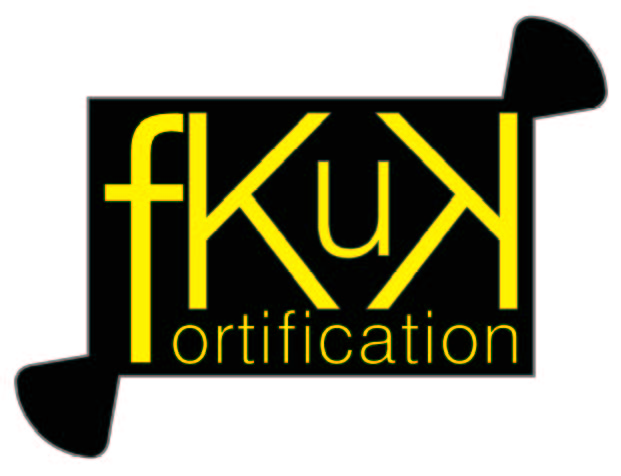

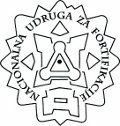

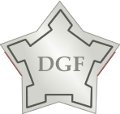

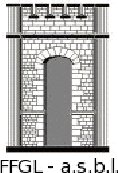
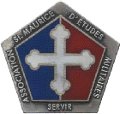

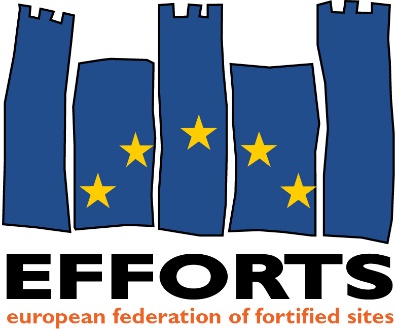

 © International Fortress Council: for the preservation of fortifications +31 6 14479368
© International Fortress Council: for the preservation of fortifications +31 6 14479368 